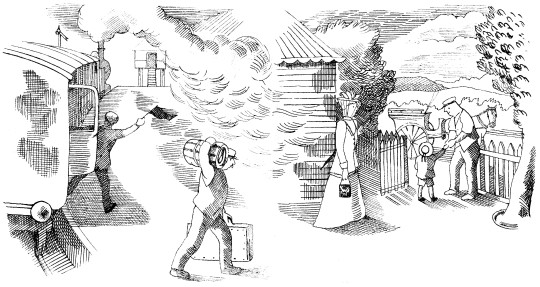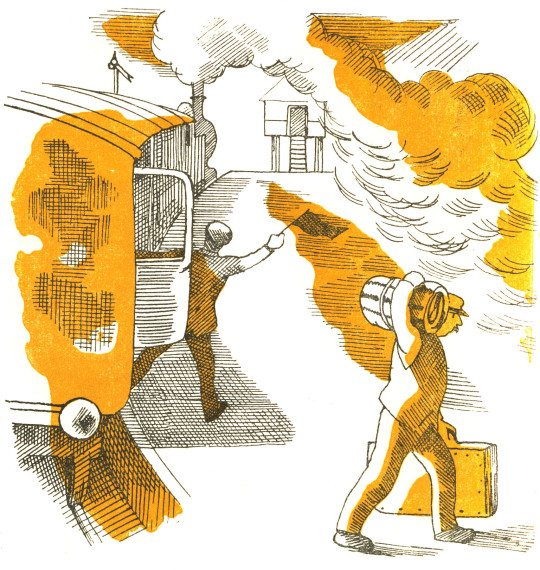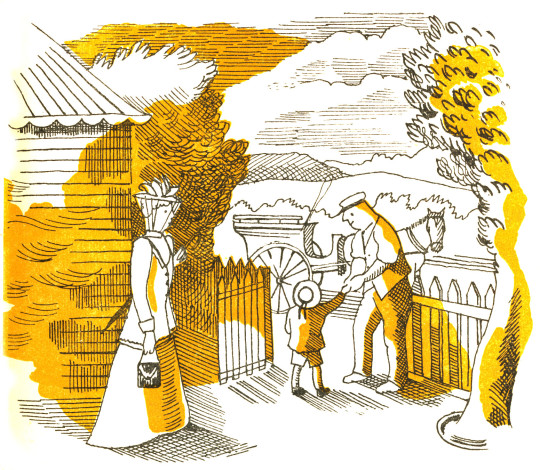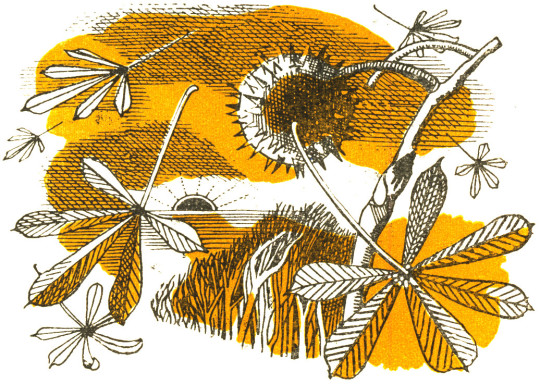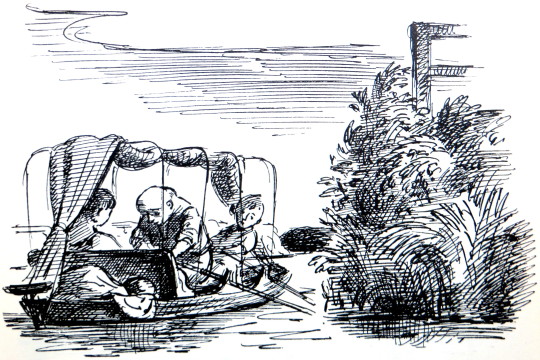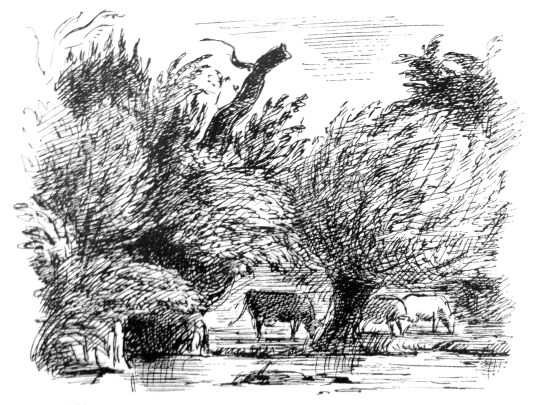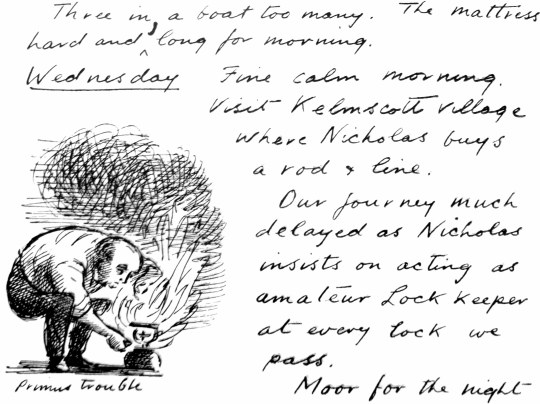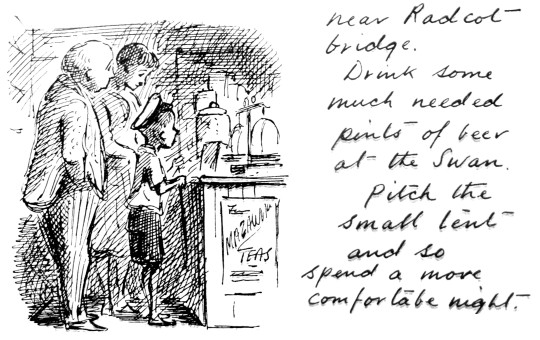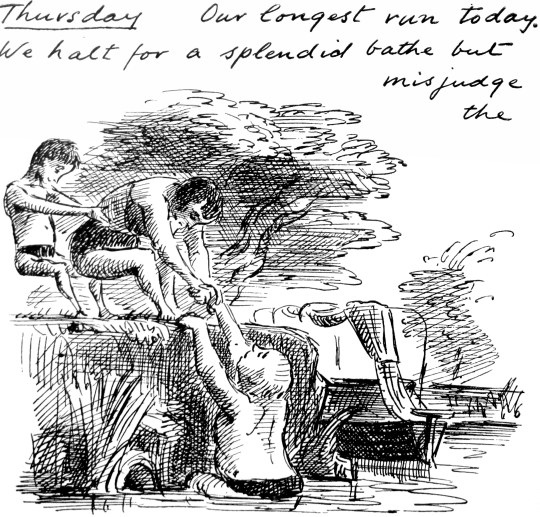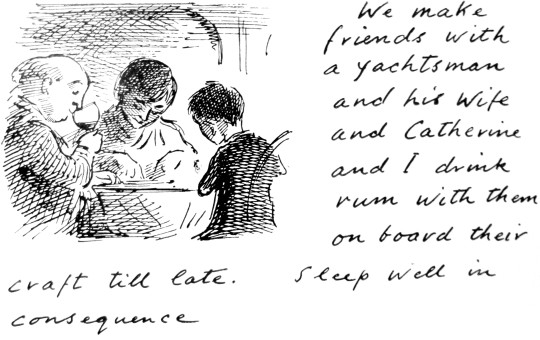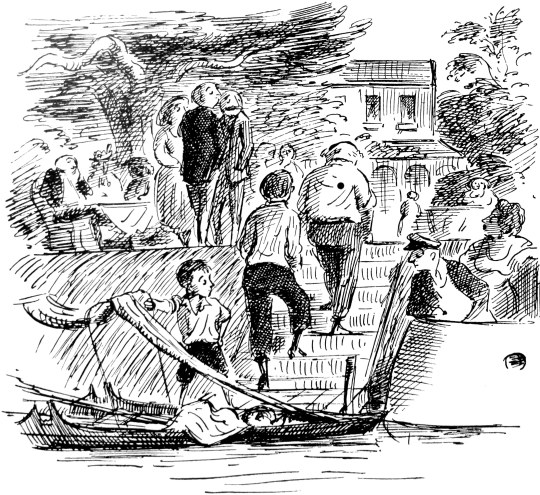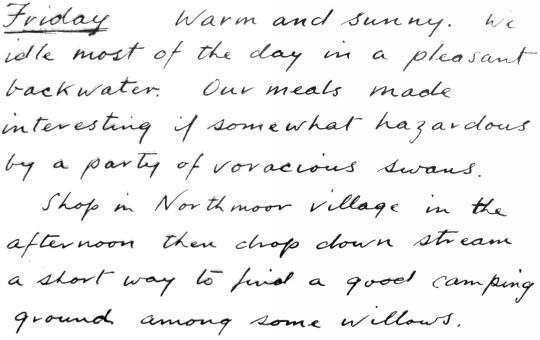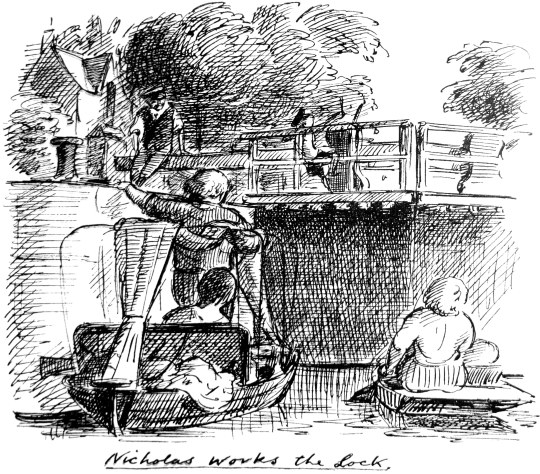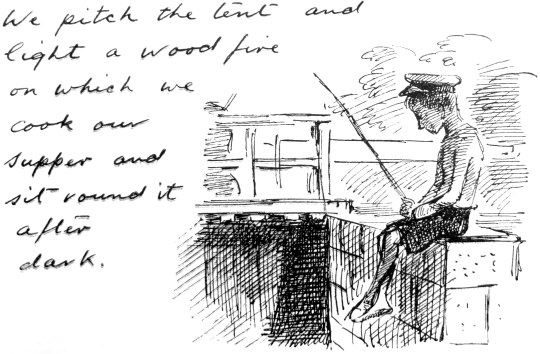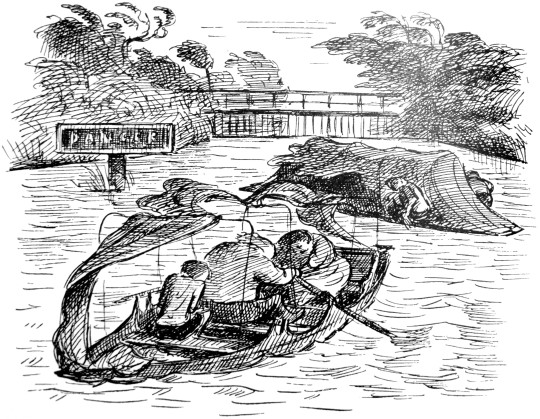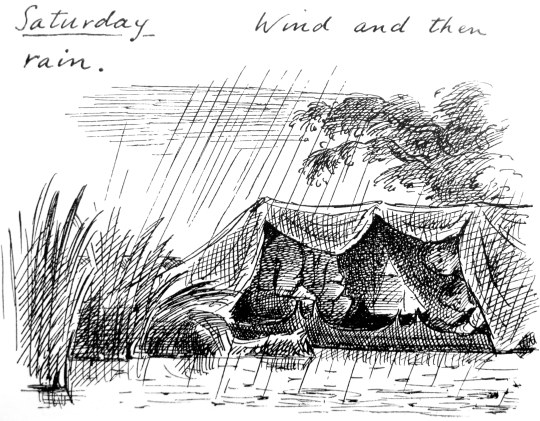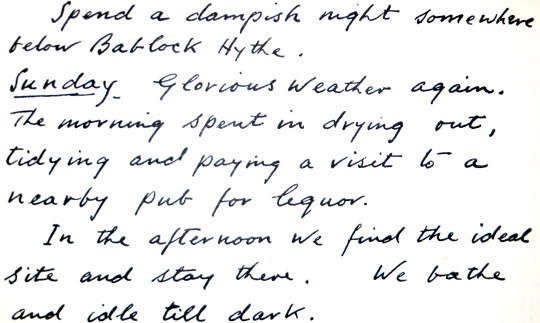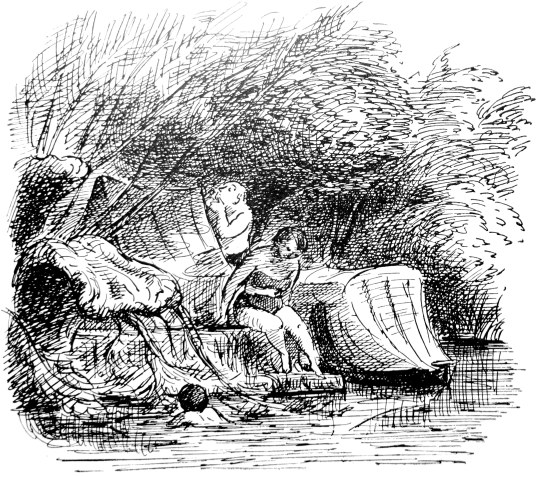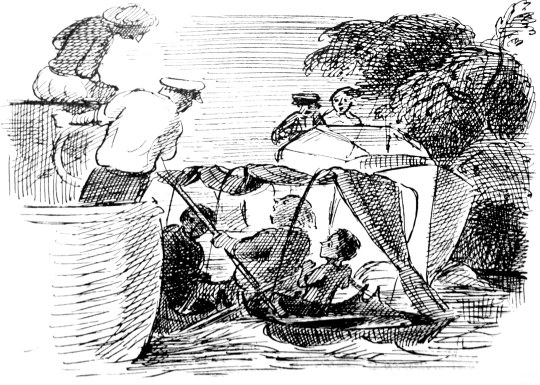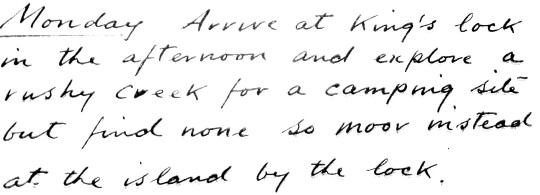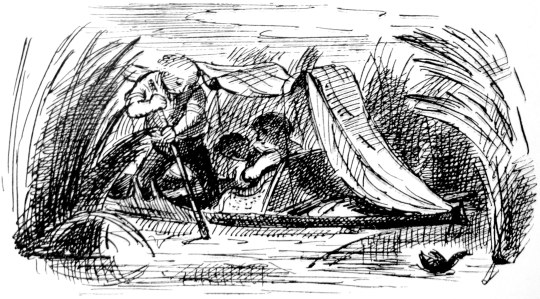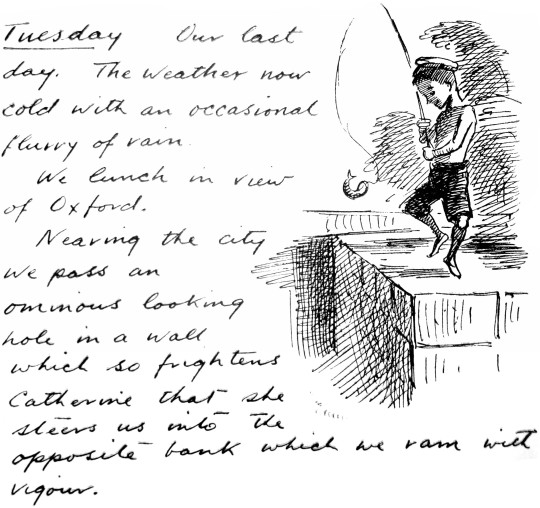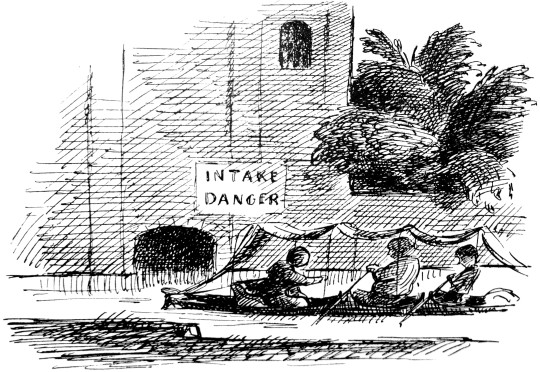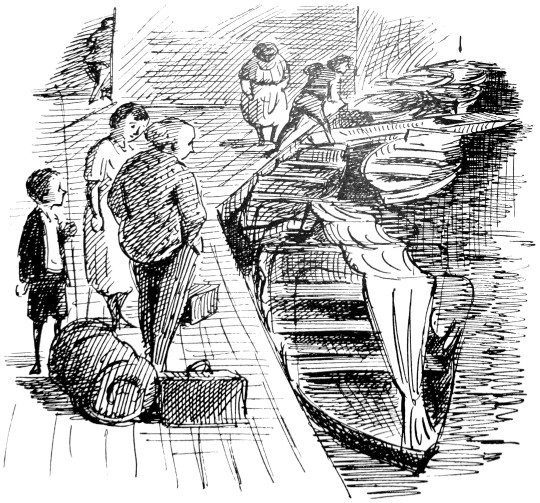Great Bardfield being a small community of artists, it is only natural that they would borrow ideas, items and homes from each other to work in. Here are a few examples of connections in illustrated books by the people in the community that all were published within a few years of each other.
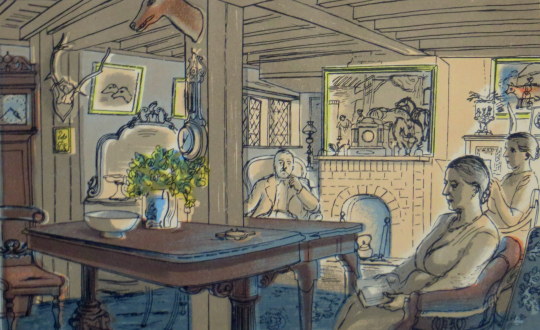
Edward Bawden – Sunday Evening, 1949 (Life in an English Village)
The picture above shows the sitting room at Ives Farm, Great Bardfield. Tom Ives is pictured in the corner with his pipe. It’s depicted in a lithograph by Edward Bawden from the King Penguin book ‘Life in an English Village’ (1949), around the same time Aldridge himself used this house in a book illustration for ‘Adam Was A Ploughman’ (1947) by Clarence Henry Warren.
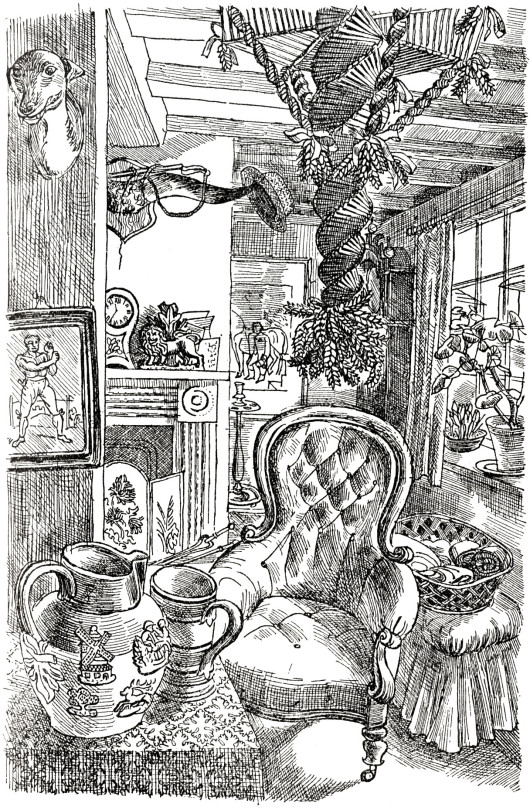
John Aldridge – Living Room, 1947 (Adam Was A Ploughman)
On the fireplace you can see a Staffordshire figure of a lion by a tree, it was illustrated again on another page in ‘Adam Was A Ploughman’, pictured below.
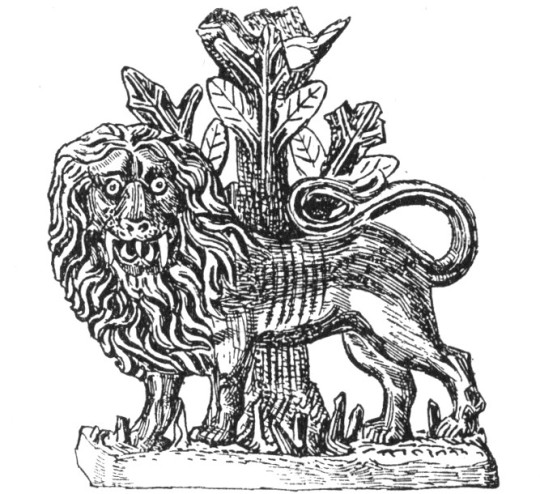
John Aldridge – Lion, 1947 (Adam Was A Ploughman)
The photograph below is from Volume Five of The Saturday Book (1945), in a chapter by Edwin Smith on ‘Household Gods’ and is the same Staffordshire Lion.
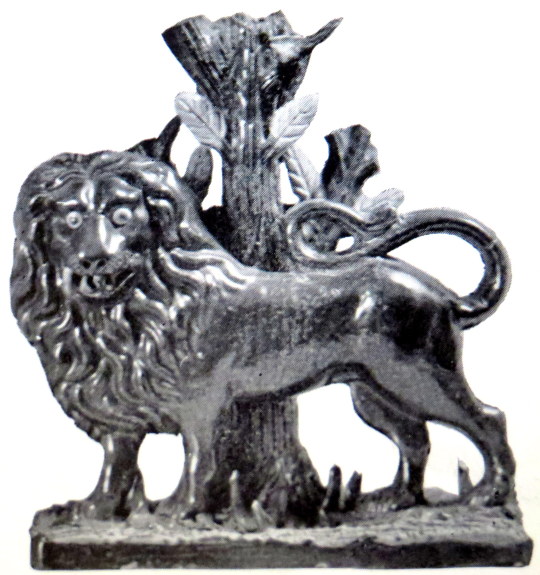
Edwin Smith – Lion, 1945 (The Saturday Book)
Back to the drawing of Ives farm living room is a corn-dolly hanging up, below in the King Penguin book ‘Life in an English Village’ I have picked it out in yellow.
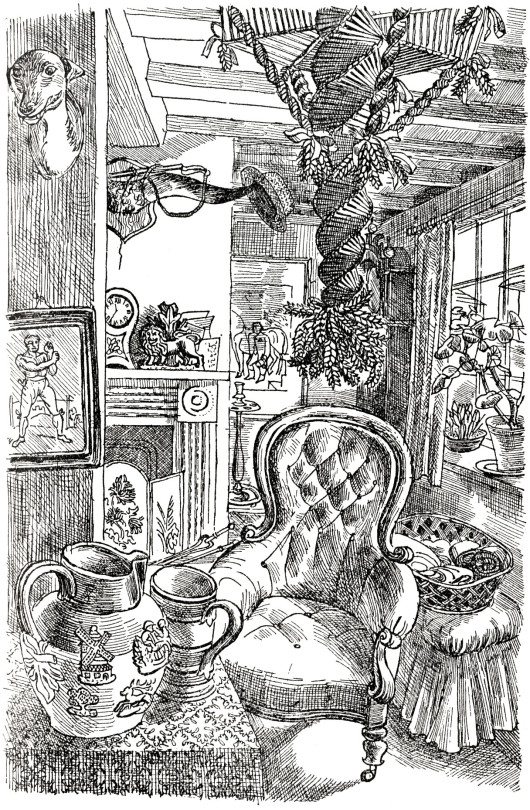
John Aldridge – Living Room, 1947 (Adam Was A Ploughman)
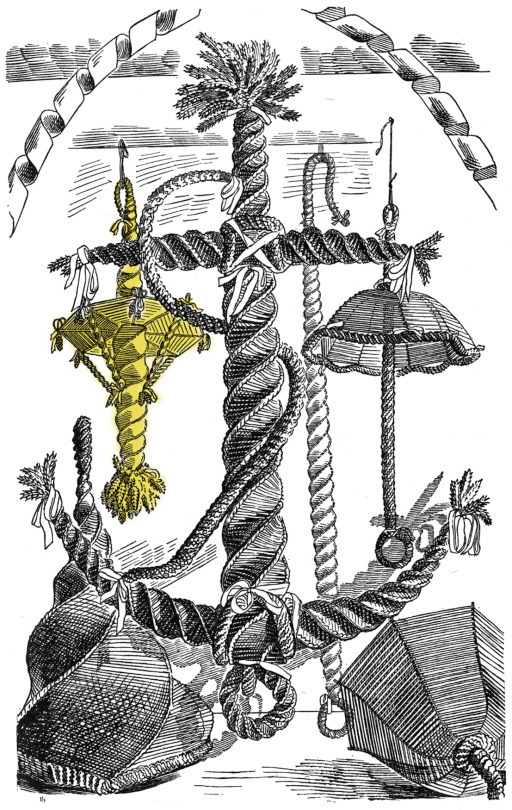
Edward Bawden – Corn-dollies, 1949 (Life in an English Village)
To the bottom right of the image above is also the bell used in the Pub lithograph below. Below the bell, the one-eyed man is Fred Mizen, a gardener and thatcher who also had a talent for making corn-dollie, it is likely all of them are by him.
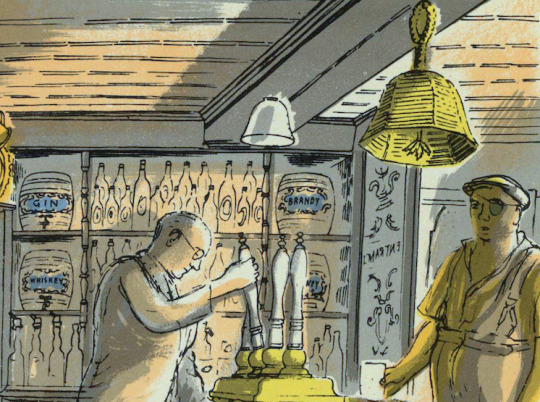
Edward Bawden – The Bell (detail), 1949 (Life in an English Village)
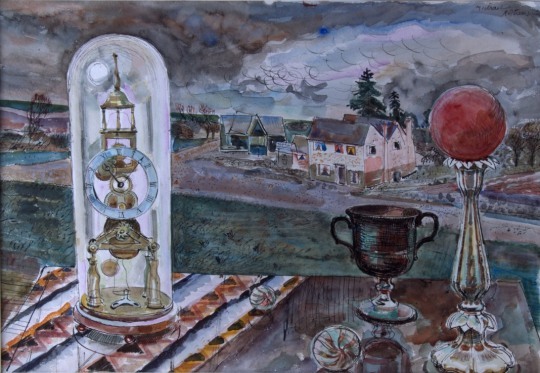
Michael Rothenstein – Clock and Candlestick, 1942
The painting by Rothenstein above is a curious still life of a table and village scene. Curiously enough these items appear again in fifth Volume of The Saturday Book, along with the Aldridge Lion photograph. The article mentioned the clock ‘flanked by exotic shapes contrived from coloured balls on candlesticks’ it is wisely assumed that the picture is from Rothenstein’s house.
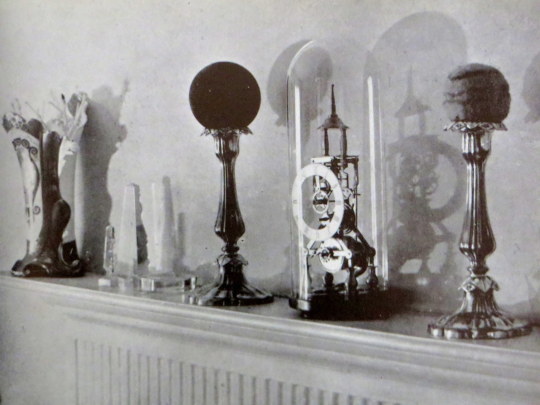
Edwin Smith – Clock and Candlestick, 1945 (The Saturday Book)
Clarence Henry Warren – Adam Was A Ploughman, 1947
Leonard Russell (Editor) – The Saturday Book, 1945
Noel Carrington – Life in an English Village, 1949
